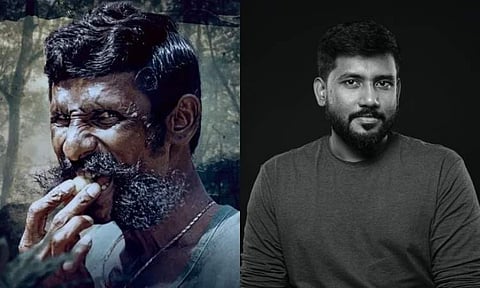

Veerappan. For some, he was a hero, for some others, an anti-hero. For many, he was just an outlaw or brigand whom they came across in newspapers, television, and books. There have been many fables and iterations of Veerappan, and the latest in this list is the ZEE5 docuseries, Koose Munisamy Veerappan. Debut director Sharath Kumar Jothi, along with the journalists of Nakkheeran, have dived deep into the story of the holdupper, focusing on the people caught in between Veerappan and the Police officials trying to nab him.
In this interview, the director opens up about why he chose this perspective, the behind-the-scenes of making the series, the cinematography choices, and more
Excerpts:
On why he chose to debut with this format and story
I identify myself as a storyteller, and the format doesn’t really matter to me. My only concern is the subject or story I am dealing with and how to present it to the audience in the best way possible.
Going forward too, my only ambition is to continue telling stories. I want to be the best in the craft, of course. But I have no fixed dreams about who I want to work with, or on what subject, or format, etc.
On the protagonists of the docuseries
The victims caught between the Veerappan and the Police were the protagonists of our story. We decided as a team that this is not Veerappan’s biography. Veerappan is not the hero of this story. While starting, I planned to keep a few shots showing Veerappan as a hero. However, we eventually decided to avoid them because even if he did some good things, he did smuggle sandalwood, and kill elephants and people, which is against the law. We were clear not to glorify any illegal activities Veerappan orchestrated, and almost everything he did was against the law. Our ultimate aim was to get the audience's attention to the victims and get them the justice they rightfully deserve.
On the semi-fiction- semi-non-fiction format
The idea to make it a mix of fiction and non-fiction came from the network, ZEE5. As the aim was to reach a wider set of audience, we thought that this format would make the docuseries easier to watch.
Further, I decided that the visual retelling of Veerappan's narration shouldn't have dialogues, because I didn't want the audience to start consuming it as fiction. Nobody knows the exact exchange of words between Veerappan and other characters. If I had written the dialogues, it would have amounted to manipulation. The fictional parts were only meant to be a visual guide to the documentary oration.
On how the sources were identified and made to talk
The credit for the sources goes entirely to Vasanth Balakrishnan, the head of research on this project. He, along with Nakkheeran journalists Jeeva Thangavel and Subbu, went back to the villages and tracked down the people. If they approached ten people, only one or two people agreed to speak. It was a task to make the victims speak. We had to be sensitive towards their feelings and ensure that they never felt that we were selfish in recording them for our benefit.
Once the sources were shortlisted, we prepared extensive questions for them. While we expected a certain answer to a question, some of them surprised us with a completely different reply, which was so effective in propelling the narrative.
On the cinematography choices in the docuseries
A lot of craftsmanship went behind the series, which may have gone unnoticed because of the depth of the subject. We had specific frames designated to the sources. Most of the credit for the aesthetic outcome of the series should go to DoP Raj Kumar. He is a huge fan of the frame within a frame, and he would have used it in the scene where everything plays out in a car's rear-view mirror. He actually wanted to include more cinematic shots, but I decided against it as it would take the audience away from the story. We also included drone shots of the forest because it was Veerappan's dwelling, and we wanted to provide an immersive feeling to the audience.
On facts about Veerappan that surprised him
I was amazed by his sense of humour. The way he narrates his story with a sense of calm and satire was surprising. I was also shocked by his knowledge of the current affairs. For someone who lived most of his life in the forest, he was able to provide political commentary and knew almost everything about day-to-day happenings. He used to consume news through newspapers and radio almost every day. Veerappan is always projected as a legendary character, so I expected a demon, but seeing him pray when a bird passes by or perform pooja of his guns, I was surprised to see how rooted he was.